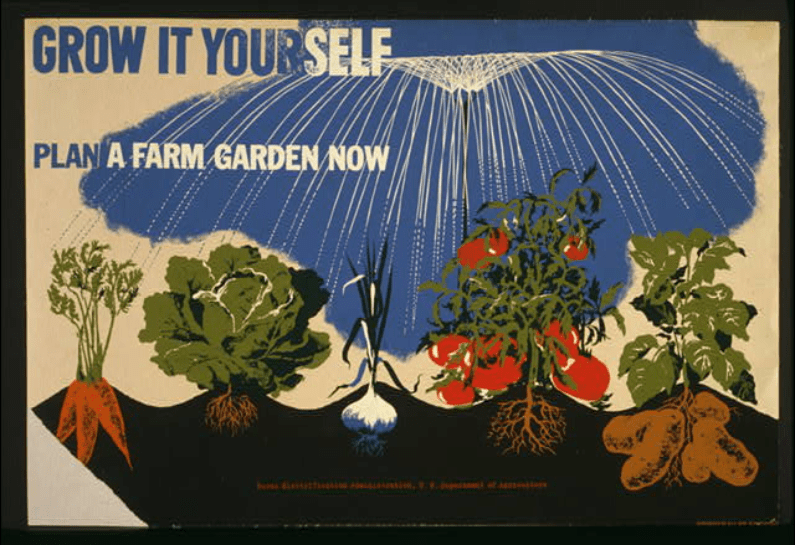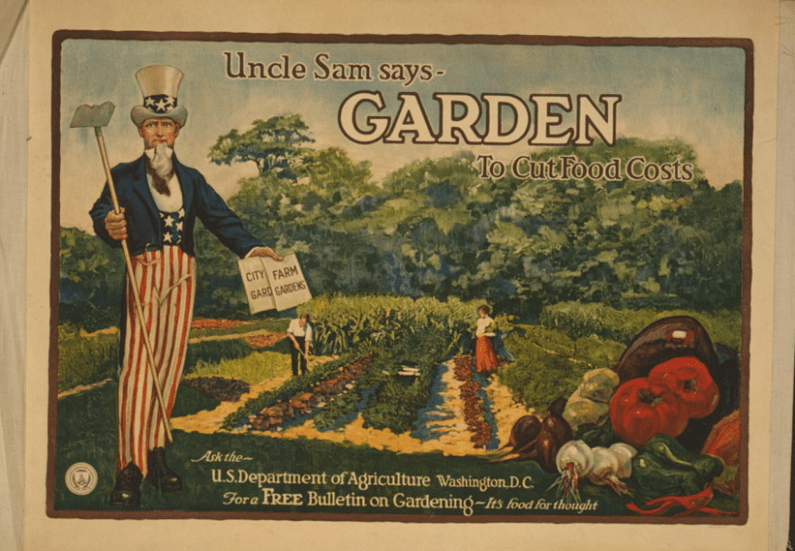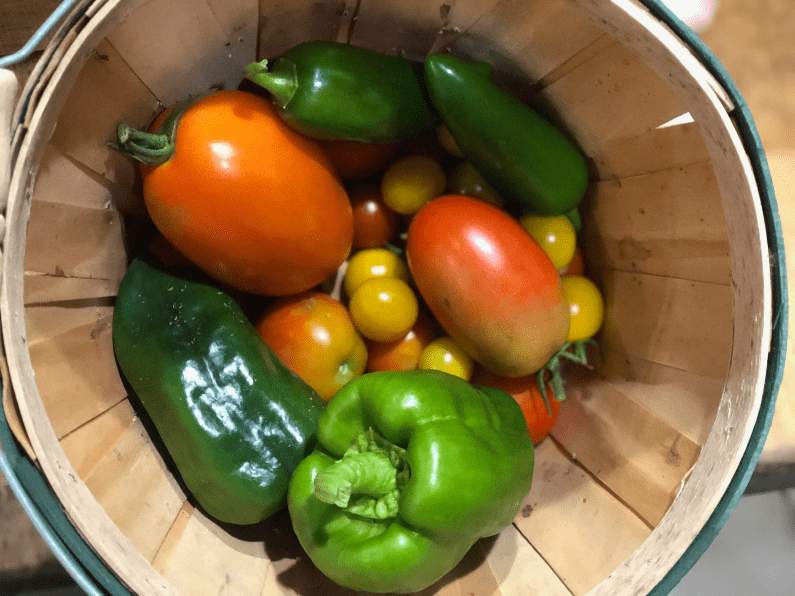In World War I and World War II, the United States government encouraged it citizens to start Victory Gardens.
In 1917, Charles Lathrop Pack, organized the National War Garden Commission to cultivate the Victory Garden movement. The idea was to increase the food supply without impacting those already involved in agriculture and without affecting critical transportation already allocated to the war effort.
The victory gardens during both world wars asked American families to do their part too in growing their own food to enable us to ship for food overseas to our allies and our troops. By 1944, there were almost 20 million victory gardens producing over 40% of the food! Americans stepped up then to do their part on the home front as similarly as we are doing today.
Other countries, such as Australia, Canada, Germany and United Kingdom also had war gardens planted in public spaces and at private residences. The vegetable gardens were said to boost morale and provide a sense of pride that civilians were assisting in the war effort on the home front.
The modern victory garden movement is something a lot of Americans have jumped toward with the anxiety of empty grocery store shelves, food shortages, rising food prices, and the fact that getting outside with nature is good for our soul.
The world is currently at “war”, however, it is not like any war we’ve experienced before. In the 21st century, we’ve faced a pandemic, many natural disasters, economic strains and more.
Publications throughout America contained ads to promote the victory garden movement

. New York, None. [Nyc: nyc wpa war services, between 1941 and 1943] Photograph. https://www.loc.gov/item/99400959/
Uncle Sam was encouraging fellow Americans to cut food costs by gardening and furthermore with the start of food rationing in 1942, Americans had even more incentive to grow their own food. First Lady Eleanor Roosevelt even grew a victory garden on the White House lawn.
Families grew tomatoes, peas, carrots, turnips, squash and lettuce. They ate many things fresh and then preserved vegetables for the winter months to supplement food that was available. Victory gardens greatly helped secure our nation’s food supply.
The National War Garden Commission published manuals and instruction booklets for war gardening and home storage of vegetables. Homeowners were encouraged to keep chickens for fresh eggs.
Home gardeners were soldiers of the soil and doing their part by growing their own food gardens.

. United States, 1917. Photograph. https://www.loc.gov/item/00653180/.
How to Get Started with Your Own Victory Garden
More of us are interested in where our produce comes from and are participating in more farm to table movements. Just search #vegetablegarden or #growyourown on Instagram and you’ll find plenty of peers digging in the dirt and growing their own food.
Select a Garden Area
If you have enough space in your own backyard, choose an area that has well-drained soil and received at least 6 – 8 hours of sunlight daily. Your space can be as large or a small as you desire. You can plant in long rows for a large garden or plant using the square foot garden method in a raised bed.
Prepare Your Garden Space
Remove any sod with a shovel or trowel and amend the space with good quality compost. Spread the compost approximately 3″ thick on top of the garden bed and incorporate the compost into the native soil.
If you’re growing in a raised bed, construct or purchase a raised bed kit. Remove the sod from the area where the raised bed will be placed and fill the bed with a good quality garden soil and compost.
Decide What Vegetable Plants to Grow
My best advice is to grow what you like to eat and plant what grows well in your area. In the heat of the summer, lettuce will not grow well in hot growing areas, but plants like sweet potatoes, okra and cowpeas will thrive! If you’re in a cooler climate, you may be able to grow leafy greens most of the year. Here’s a list of 6 crops for beginner gardeners that are easy to grow!

You can sow seeds directly in the garden when the soil temperature is warm enough and the threat of frost has passed. Another option is to visit a local garden center for ready to plant seedlings. Planting seedlings will ensure you are harvesting vegetables sooner as compared to starting seeds.
Get Started Planting Vegetables in your Victory Garden
Use your zip code to determine your last frost average frost date when planting in the spring. Begin planting when the threat of frost has passed.
Let the seed packet or plant marker be your guide regarding planting specifics. The back of both contain useful information including planting depth and spacing.
Caring for a Victory Garden
Weekly watering and fertilizing when needed will ensure your garden is off to a successful start. A general rule of thumb is to make sure plants receive about 1 inch of water per week whether from rainfall or irrigation. You may need more or less water depending on the temperature, humidity and evaporation.
Pull any weeds to avoid them taking over your garden bed.
How to Grow a Victory Garden with Limited Space
There’s tons of products available for all sorts of size gardens whether you want a patio tomato plant in a container, grow bags or a small raised bed. You can grow edible plants in window boxes and intermix beautiful herbs in your flower beds.
You can even grow zucchini in containers as well as jalapeno peppers!

Many cities offer community garden space rentals where you rent a plot for the season. The City of Denton, TX, is just one example of many cities offering small spaces for rent.
The City of Austin has multiple options for growing your own produce in a rented space. There’s space exclusive to college students and college faculty and community gardens with scholarships for low-income and special needs citizens. Click here for a comprehensive list of garden space in Austin, TX.
If you notice vacant lots in towns, approach the property owner and propose leasing the lot for small garden.
Benefits of Victory Gardens
One of the main benefits of your own garden is being able to consume fresh produce the moment it is ready to harvest.
You will maintain complete control of how your food is grown and produced.
You are reducing the amount of miles food travels by consuming locally grown produce.
Food diversity is increased as gardeners can plant special heirloom and a-typical varieties that are not commonly found in grocery stores.
Sharing extra produce is a great way to network with neighbors and those in your community.
Gardening if a relatively inexpensive hobby if one does not get too carried away. The price of one package of seeds will produce pounds of food to help reduce your grocery bill.
What will you grow in your Victory Garden?


